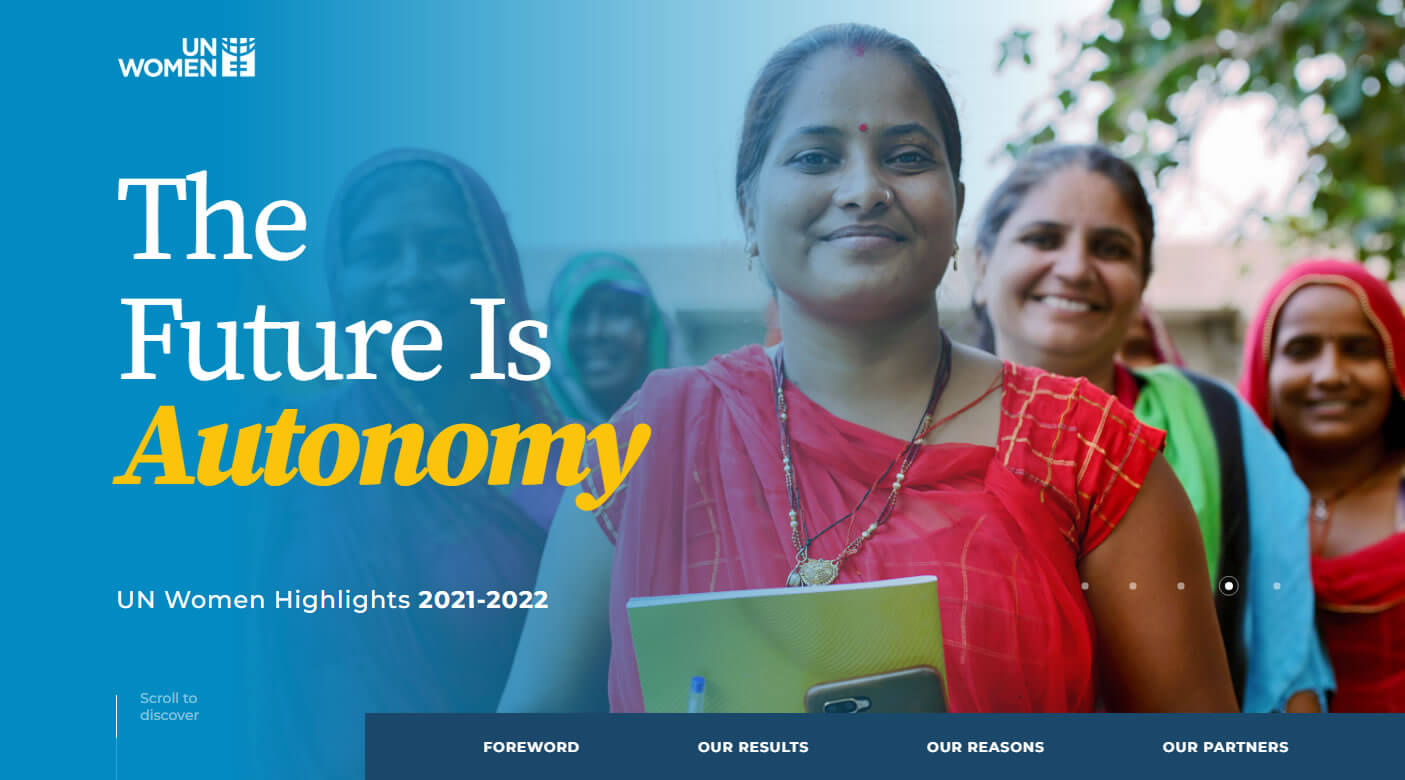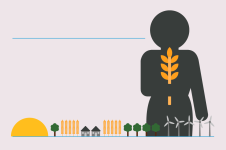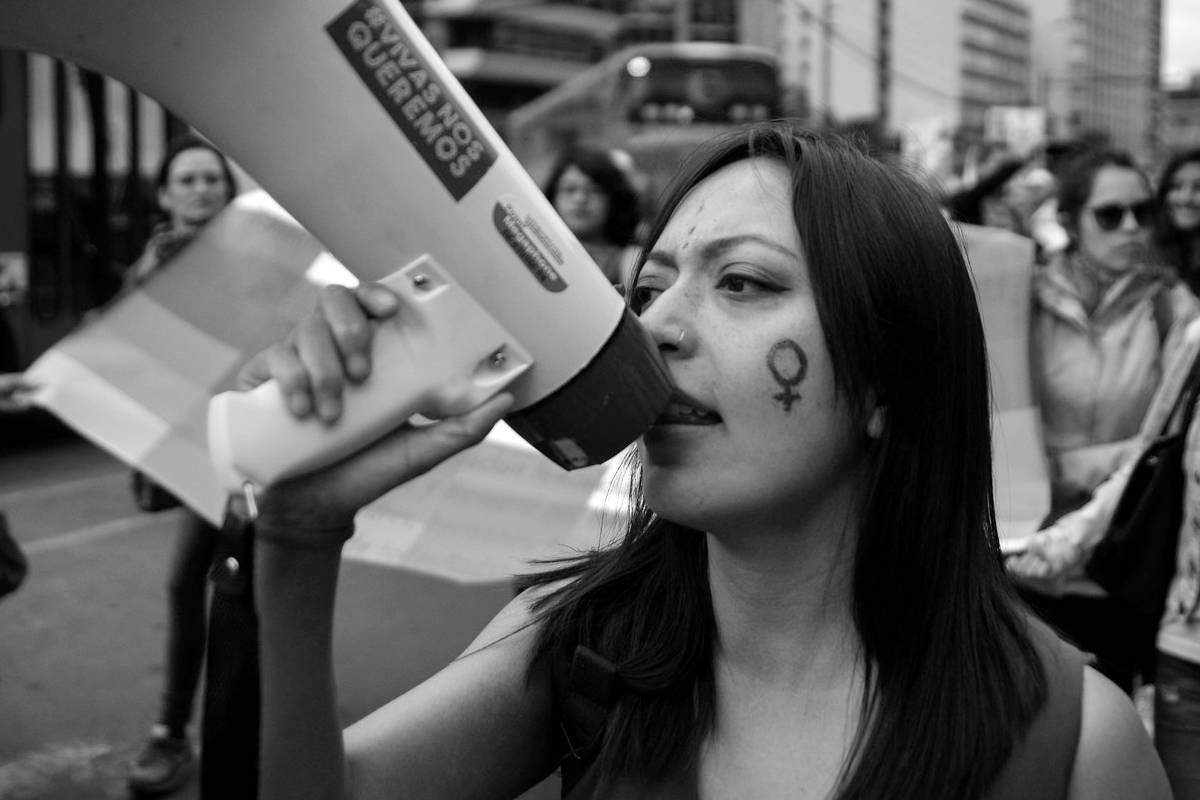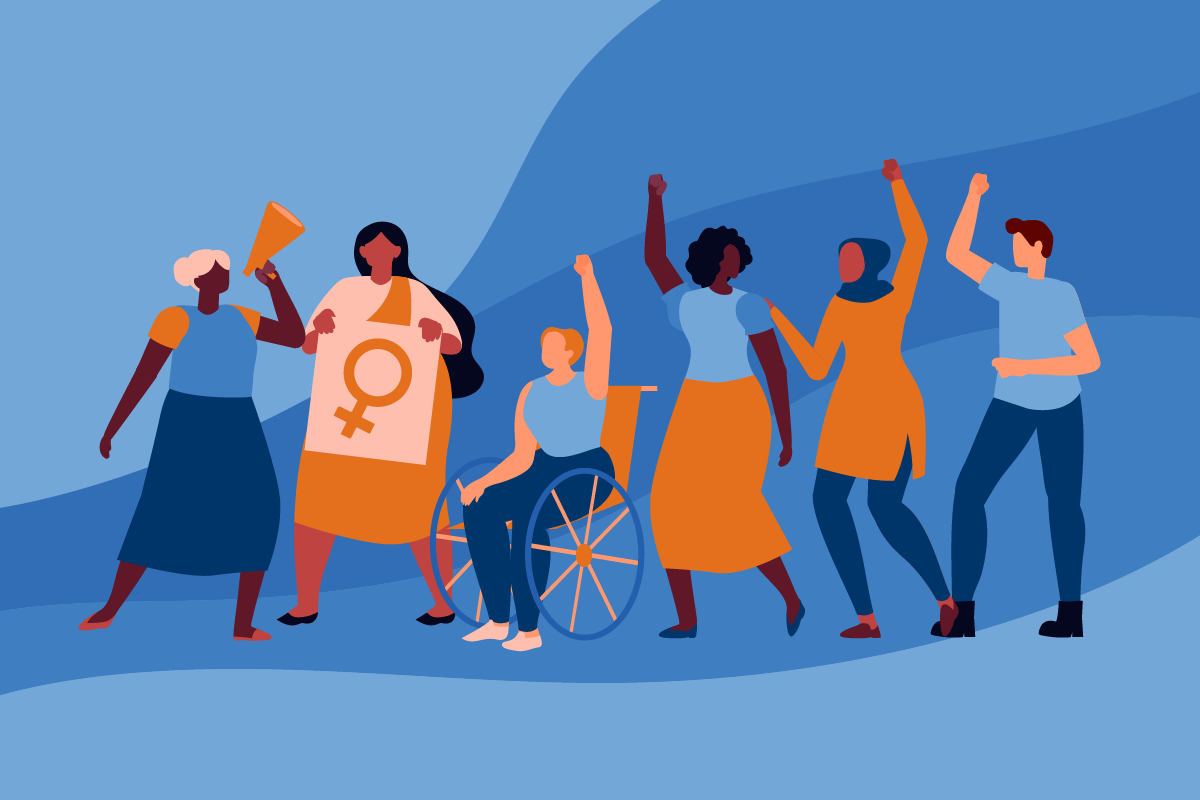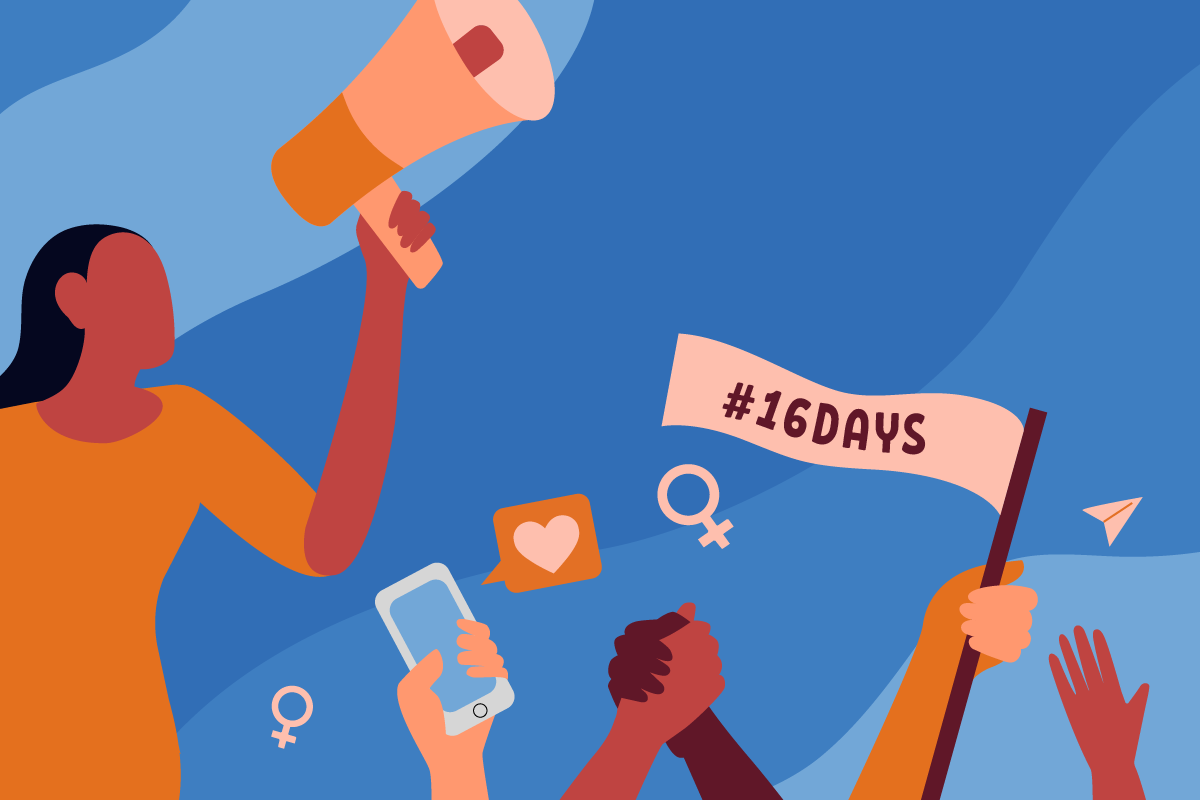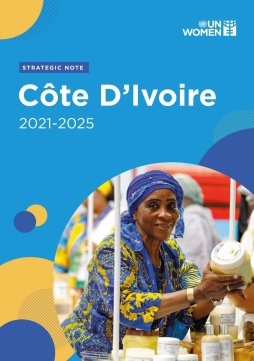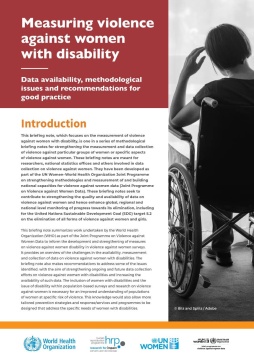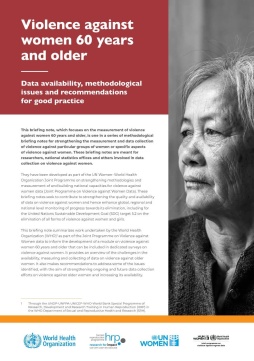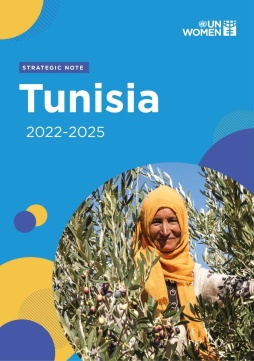Facts and figures: Ending violence against women

The availability of data on violence against women and girls has improved considerably in recent years and data on the prevalence of intimate partner violence is now available for at least 161 countries. Please visit our research and data page to better understand how data is crucial to UN Women’s work on preventing and responding to violence against women and girls.
- Technology-facilitated violence against women and girls
- Climate change and violence against women and girls
- Femicides/Feminicides
- Prevalence of violence against women and girls
- Impact of COVID-19 on violence against women and girls
- Reporting of violence against women
- Laws on violence against women and girls
- Risk factors of violence against women and girls
- Economic costs of violence against women and girls
- Sexual violence against women and girls
- Trafficking in women
- Violence against girls
- Female genital mutilation
- Violence against women in public life
- Notes
Technology-facilitated violence against women and girls
- The lack of a common definition of technology-facilitated violence against women and girls impacts on the lack of comparable data at a global level. But available evidence collected at country and regional levels confirms high prevalence rates.
- One in 10 women in the European Union has experienced cyber-harassment since the age of 15, including having received unwanted and/or offensive sexually explicit emails or SMS messages, or offensive and/or inappropriate advances on social networking sites [1].
- In the Arab States, a regional study found that 60 per cent of women internet users in the region had been exposed to online violence in the past year [2].
- In Uganda, in 2021, about half of women (49 per cent) reported being involved in online harassment at some point in their lifetime [3].
- According to a 2016 survey by the Korean National Human Rights Commission, 85 per cent of women experienced hate speech online [4].
Climate change and violence against women and girls
- Climate change and slow environmental degradation exacerbate the risks of violence against women and girls due to displacement, resource scarcity and food insecurity and disruption to service provision for survivors.
- Following Hurricane Katrina in 2005, the rate of rape among women displaced to trailer parks rose 53.6 times the baseline rate in Mississippi, USA, for that year [5].
- In Ethiopia there was an increase in girls sold into early marriage in exchange for livestock to help families cope with the impacts of prolonged droughts [6].
- Nepal witnessed an increase in trafficking from an estimated 3,000–5,000 annually in 1990 to 12,000–20,000 per year after the 2015 earthquake [7].
Femicides/Feminicides
- In 2022, around 48,800 women and girls worldwide were killed by their intimate partners or other family members. This means that, on average, more than five women or girls are killed every hour by someone in their own family.
- While 55 per cent of all female homicides are committed by intimate partners or other family members, only 12 per cent of all male homicides are perpetrated in the private sphere [8].
Prevalence of violence against women and girls
- Globally, an estimated 736 million women—almost one in three—have been subjected to physical and/or sexual intimate partner violence, non-partner sexual violence, or both at least once in their life (30 per cent of women aged 15 and older). This figure does not include sexual harassment. The rates of depression, anxiety disorders, unplanned pregnancies, sexually transmitted infections, and HIV are higher in women who have experienced violence compared to women who have not, as well as many other health problems that can last after the violence has ended.
- Most violence against women is perpetrated by current or former husbands or intimate partners. More than 640 million or 26 per cent of women aged 15 and older have been subjected to intimate partner violence.
- Of those who have been in a relationship, almost one in four adolescent girls aged 15–19 (24 per cent) has experienced physical and/or sexual violence from an intimate partner or husband. Sixteen per cent of young women aged 15 to 24 experienced this violence in the past 12 months [9].
Impact of COVID-19 on violence against women and girls
- The COVID-19 pandemic has intensified violence against women and girls (VAWG) and has also exposed and exacerbated deep structural inequalities, reversed decades of progress on women’s participation in the labour market, raised the number of women living in extreme poverty, and increased the burden of unpaid care and domestic work, all of which exacerbates the risk factors and drivers of VAWG.
- In 2021, since the pandemic began, 45 per cent of women reported that they or a woman they know has experienced a form of VAWG. Seven in 10 women said they think that verbal or physical abuse by a partner has become more common. And six in 10 felt that sexual harassment in public spaces has worsened [10].
Reporting of violence against women
- Less than 40 per cent of the women who experience violence seek help of any sort. In the majority of countries with available data on this issue, among women who do seek help, most look to family and friends and very few look to formal institutions, such as police and health services. Fewer than 10 per cent of those seeking help reported to the police [11].
Laws on violence against women and girls
- At least 162 countries have passed laws on domestic violence, and 147 have laws on sexual harassment in the workplace. However, even when laws exist, this does not mean they are always compliant with international standards and recommendations or are implemented and enforced.
- In 2022, the Republic of Congo and Côte d’Ivoire enacted legislation protecting women from various forms of domestic violence, while the Republic of Congo, Indonesia, and Jamaica enacted legislation on sexual harassment in the workplace, including criminal penalties and civil remedies [12].
Risk factors of violence against women and girls
- A regional analysis of Women’s Health Surveys conducted from 2016 to 2019 in five CARICOM Member States—Grenada, Guyana, Jamaica, Suriname, and Trinidad and Tobago—found that ever-partnered women aged 15–64, who were in relationships with men who had attitudes and behaviours that reinforce men’s dominant position over women and perpetuate gender inequality, were more likely to have experienced lifetime and current intimate partner violence. Behaviours intended to control women’s bodies, autonomy, and contact with others are also strongly correlated with an increased risk of intimate partner violence [13].
Economic costs of violence against women and girls
- Violence against women can result in significant costs to the state, victims/survivors, and communities. Costs are both direct and indirect, and tangible and intangible. For example, the costs of the salaries of individuals working at shelters are direct tangible costs. Costs are borne by everyone, including individual victims/survivors, perpetrators, the government, and society in general.
- In Viet Nam, both out-of-pocket expenditures and lost earnings represent nearly 1.41 per cent of the Gross Domestic Product (GDP). More importantly, regression results for estimating productivity loss due to violence indicate that women experiencing violence earn 35 per cent less than those who are not abused, pointing to another significant drain on the national economy [14].
- In Egypt, some 500,000 working days are lost each year due to marital violence, and the health sector bears more than USD 14 million in costs to serve just one quarter (600,000) of survivors [15].
- In Morocco, the total cost of physical and/or sexual violence against women was estimated at MAD 2.85 billion (around USD 308 million) a year [16].
- In 2021, gender-based violence across the European Union was estimated to cost around EUR 366 billion a year. Violence against women makes up 79 per cent of this cost, amounting to EUR 289 billion [17].
Sexual violence against women and girls
- Globally, 6 per cent of women report that they have been subjected to sexual violence from someone other than their husband or partner. However, the true prevalence of non-partner sexual violence is likely to be much higher, considering the stigma related to this form of violence [18].
- Fifteen million adolescent girls worldwide, aged 15–19 years, have experienced forced sex. In the vast majority of countries, adolescent girls are most at risk of forced sex (forced sexual intercourse or other sexual acts) by a current or former husband, partner, or boyfriend. Based on data from 30 countries, only 1 per cent have ever sought professional help [19].
Trafficking in women
- In 2020, for every 10 victims of human trafficking detected globally, about four were adult women and about two were girls. Most of the detected victims of trafficking for sexual exploitation (91 per cent) are women. Analysis of court cases shows that female victims are subjected to physical or extreme violence at the hands of traffickers at a rate three times higher than males [20].
Violence against girls
- During the past decade, the global rate of child marriage has declined, with the global proportion of young women aged 20–24 years old who were married before the age of 18 decreasing from nearly one in four in 2010 to almost one in five (19 per cent) in 2022. However, the profound effects of the pandemic are threatening this progress, with up to 10 million additional girls at risk of child marriage in the next decade due to the pandemic [21].
- School-related gender-based violence is a major obstacle to universal schooling and the right to education for girls. Globally, one in three students, aged 11–15, have been bullied by their peers at school at least once in the past month, with girls and boys equally likely to experience bullying.
- While boys are more likely to experience physical bullying than girls, girls are more likely to experience psychological bullying, and they report being made fun of because of how their face or body looks more frequently than boys [22].
Female genital mutilation
- At least 200 million women and girls aged 15–49 have undergone female genital mutilation in 31 countries where the practice is concentrated.
- In sub-Saharan Africa, one in four women and girls has undergone female genital mutilation. But levels vary widely across countries.
- There are still countries where female genital mutilation is almost universal, where at least nine in 10 girls and women, aged 15–49 years, have been cut, while it affects no more than 1 per cent of girls and women in Cameroon and Uganda [23].
Violence against women in public life
- Across five regions, 82 per cent of women parliamentarians reported having experienced some form of psychological violence while serving their terms. This included remarks, gestures, and images of a sexist or humiliating sexual nature, threats, and mobbing. Women cited social media as the main channel of this type of violence, and nearly half (44 per cent) reported receiving death, rape, assault, or abduction threats towards them or their families. Sixty-five per cent had been subjected to sexist remarks, primarily by male colleagues in parliament ©
- A global survey showed that 73 per cent of women journalists have experienced online violence. Twenty per cent said they had been attacked or abused offline in connection with online violence they had experienced. The reporting theme most often identified in association with heightened attacks was gender (49 per cent), followed by politics and elections (44 per cent), and human rights and social policy (31 per cent) [25].
Notes
[1] European Union Agency for Fundamental Rights (2014). Violence against women: An EU-wide survey, p. 104.
[2] UN Women (2021). Violence against women in the online space: Insights from a multi-country study in the Arab States.
[3] Uganda Bureau of Statistics (2021). National survey on violence in Uganda. Module I: violence against women and girls.
[4] National Human Rights Commission of Korea, Sung Soo Hong, and others (2017). The situation of hate speech and regulatory measures to combat hate speech.
[5] GBV AoR Helpdesk (2021). Climate change and gender-based violence: What are the links?
[6] UN Office for the Coordination of Humanitarian Affairs (2017). Horn of Africa: A call for action.
[7] UN Women (2020). Climate change, gender equality and human rights in Asia: Regional review and promising practices.
[8] United Nations Office on Drugs and Crime and UN Women (2023). Gender-related killings of women and girls: Global estimates of female intimate partner/family-related homicides in 2022.
[9] World Health Organization (2021). Violence against women prevalence estimates, 2018.
[10] UN Women (2021). Measuring the shadow pandemic: Violence against women during COVID-19.
[11] United Nations Economic and Social Affairs (2015). The world’s women 2015: Trends and statistics, p. 159.
[12] World Bank Group (2023). Women, business and the law 2023.
[13] UN Women (2021). Research brief: Intimate partner violence in five CARICOM countries: Findings from National Prevalence Surveys on violence against women.
[14] UN Women (2012). Estimating the cost of domestic violence against women in Viet Nam.
[15] Central Agency for Public Mobilization and Statistics and the National Council for Women, Republic of Egypt, with UNFPA (2015). The Egypt economic cost of gender-based violence survey.
[16] Haut Commissariat au Plan Maroc (2019). Rapport sur les violences faites aux femmes et aux filles, Enquête Nationale sur la Violence à l’Encontre des Femmes et des Hommes.
[17] European Institute for Gender Equality (2021). The costs of gender-based violence in the European Union.
[18] World Health Organization (2021). Violence against women prevalence estimates, 2018.
[19] UNICEF (2017). A familiar face: Violence in the lives of children and adolescents, p. 73, 82.
[20] UNODC (2022). Global report on trafficking in persons 2022, p. 25, 33.
[21] Secretary-General of the United Nations (2023). Progress towards the Sustainable Development Goals: Towards a rescue plan for people and planet. Report of the Secretary-General (special edition).
[22] UNESCO (2019). Behind the numbers: Ending school violence and bullying, p.25-26.
[23] United Nations, Department of Economic and Social Affairs, Statistics Division (2020). Achieve gender equality and empower all women and girls.
[24] Inter-Parliamentary Union (2016). Sexism, harassment and violence against women parliamentarians, p. 3.
[25] UNESCO (2022). The chilling: Global trends in online violence against women journalists.
[Page updated 21 September 2023.]




